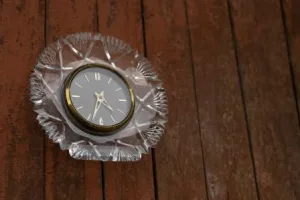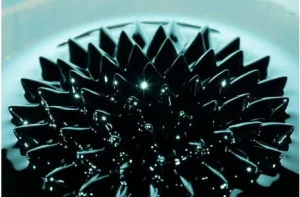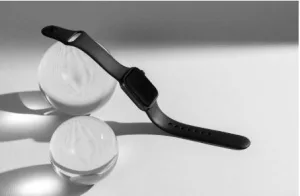The Evolution of Watch Crystals: Materials, Durability, and the Role of Precision Watch Parts

Global watch sales continue to grow steadily, with the Swiss watch industry alone exporting over $26 billion worth of timepieces in 2024, according to the Federation of the Swiss Watch Industry (FH). While design and branding often dominate headlines, industry insiders know that much of a watch’s value comes from its components. Among them, the watch crystal—the transparent cover that protects the dial—has become a focal point for innovation, balancing durability, readability, and aesthetics.
As materials science advances and consumer expectations rise, crystals are no longer just protective layers; they represent a meeting point between tradition, technology, and precision craftsmanship. This makes them one of the most important elements connecting consumers, brands, and manufacturers of precision watch parts.
The Main Types of Watch Crystals
Over the decades, manufacturers have used different materials to balance durability, clarity, and cost. The three most common options include:
- Acrylic (Plastic Glass):
Lightweight and shatter-resistant, acrylic was widely used in vintage watches. It scratches easily but can be polished, making it a cost-effective choice for entry-level timepieces. - Mineral Glass:
A step up from acrylic, mineral glass is tougher and more scratch-resistant. It remains the standard for many mid-range watches but can still show wear over time. - Sapphire Crystal:
The premium choice for luxury watches, sapphire boasts near-diamond hardness and exceptional scratch resistance. Modern sapphire crystals often feature anti-reflective coatings for improved legibility.
Each material has its own advantages depending on usage scenarios—whether it’s a casual fashion watch, a rugged sports model, or a high-end luxury timepiece.
Why the Watch Crystal Matters
Although small in size, the watch crystal has an outsized impact on performance and user experience. Key functions include:
- Scratch Resistance: Protecting the dial from everyday wear and tear.
- Impact Protection: Shielding delicate hands and indices from shocks.
- Optical Clarity: Ensuring accurate time-reading under various lighting conditions.
- Value & Longevity: Influencing both the resale price and overall life of a watch.
In short, the crystal is not just a cover—it’s an integral part of the entire timekeeping system.

Modern Innovations in Watch Crystals
Watchmakers are pushing the limits of what crystals can do:
- Anti-Reflective Coatings (AR): Reducing glare and making the dial more legible in sunlight.
- Curved Sapphire Designs: Enhancing style and allowing bolder aesthetics.
- Sustainability: Some companies are experimenting with eco-friendly production methods.
These innovations highlight how even a traditional component like the crystal continues to evolve alongside other watch parts.
The Role of Precision Watch Parts Manufacturers
Behind every durable crystal is a network of precision engineering. The watch crystal must align seamlessly with the bezel, case, and movement to maintain water resistance and mechanical stability.
This is where experienced suppliers such as Sofly watch parts play a critical role. By producing high-quality components that meet strict tolerances, they ensure that crystals integrate perfectly into the watch’s architecture. Reliable watch parts manufacturing doesn’t just enhance durability—it also supports design flexibility for global brands.
Choosing the Right Watch Crystal
When selecting a timepiece or replacing a crystal, consumers should consider:
- Budget: Acrylic remains affordable, while sapphire offers unmatched luxury.
- Lifestyle: Outdoor enthusiasts may prefer mineral glass for its balance of cost and resilience.
- Design Preferences: Curved sapphire or coated glass enhances both form and function.
Ultimately, the right crystal depends on how the watch will be worn, and how much value the wearer places on long-term durability.

Watch Crystal in the Repair and Replacement Market
Beyond new watch production, the repair and replacement market has become an essential part of the industry. Watch owners often need to replace scratched or shattered crystals to restore both aesthetics and functionality. A poorly fitted or low-quality replacement crystal can compromise water resistance, distort readability, or even reduce the long-term value of a watch.
This is why professional watchmakers and independent repair shops rely heavily on high-quality watch parts from trusted suppliers. Whether it’s matching the curvature of a sapphire crystal or ensuring mineral glass sits securely within the bezel, precision is critical.
Companies like Sofly watch parts support this aftermarket by providing reliable, accurately machined components that meet original specifications. This ensures that even older or discontinued models can be serviced effectively, helping collectors and everyday owners alike preserve the life of their timepieces.
Final Thoughts
The evolution of watch crystals reflects the broader journey of watchmaking itself: a balance of tradition, innovation, and precision engineering. Whether crafted from acrylic, mineral, or sapphire, the crystal is far more than a protective shield—it is a defining feature of the timepiece.
As the industry continues to advance, the synergy between crystals and other precision watch parts will only grow stronger. Suppliers such as Sofly watch parts play a vital role in providing reliable components that help maintain both functionality and design integrity.
